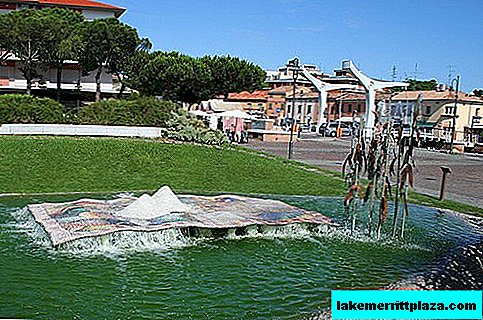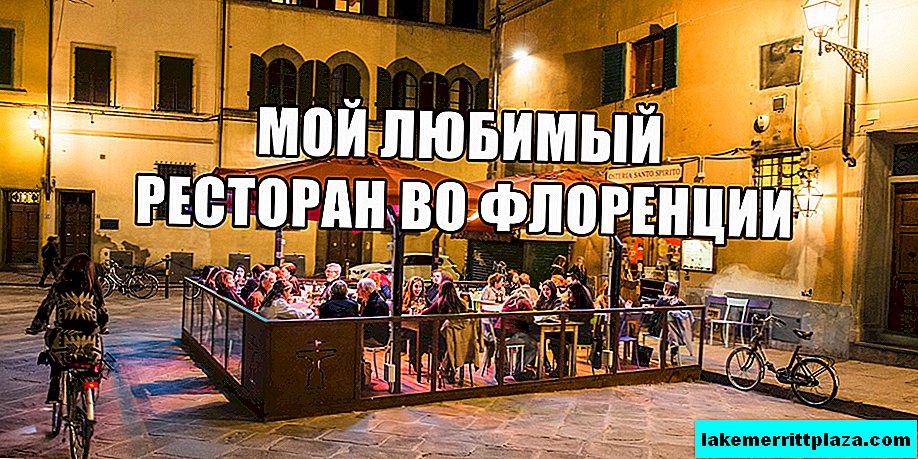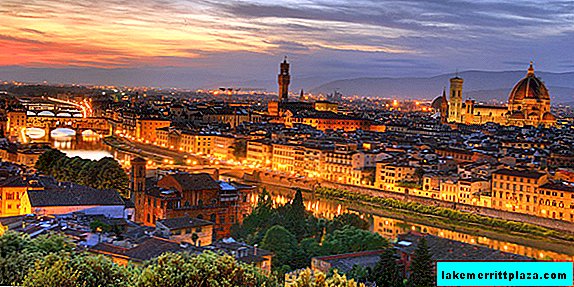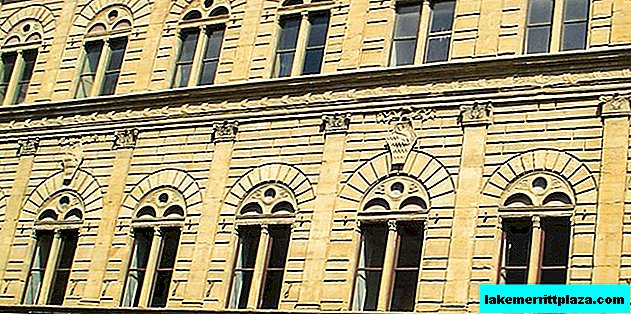The fountain of the four turtles (Fontane delle Tartarughe) is located in the center of Rome, in Piazza Mattei. It is considered one of the most beautiful fountains in Rome. Despite its location, the square and the fountain are not so easy to find, because they are located in the Roman ghetto, an area isolated from the city until 1870. The fountain is located almost on the border with the gate that once separated the city from the closed Jewish district.

When and why was created
The fountain was built in the years 1580-1588. In 1570, the restoration of the oldest aqueduct of Aqua Virgo (dell'Aqua Virgo) ended. Work began on the creation of underground canal branches to get to the square on the Champ de Mars (Campo Marzio, lat. Campus Martius), to the most densely populated areas of Rome. It was planned to build 18 fountains, but the fountain of turtles was not among them. The Italian nobleman, a member of the congress who made the water supply decisions, Muzio Mattei insisted on providing the ghetto with a new fountain and pledged to contribute financially.
Mattei Family
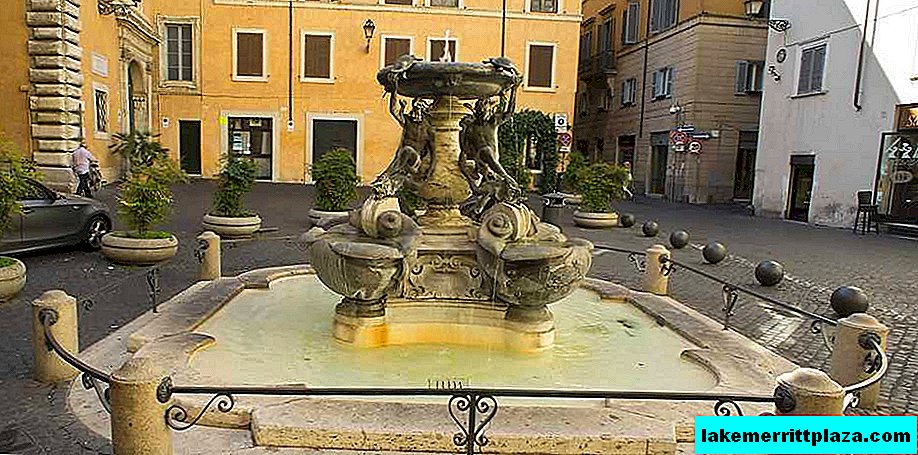
Unlike other fountains of the same period, the fountain was built under the patronage of not Pope Gregory XIII, but the Mattei family. The richest dynasty of philanthropists, merchants and religious figures (eight Vatican cardinals from the Mattei clan) owned a quarter named "Mattei Island", keys to the ghetto, partially located on their lands, as well as many buildings, including three palaces. Among them is the Palace of Mattei (Palazzo Mattei Di Giove), which overlooks the fountain. Since 1938, when the state bought the palace, it has been open to visitors. Here are located: the Library, the Ministry of Cultural Heritage and the Institute of Contemporary History.
Alexander VII
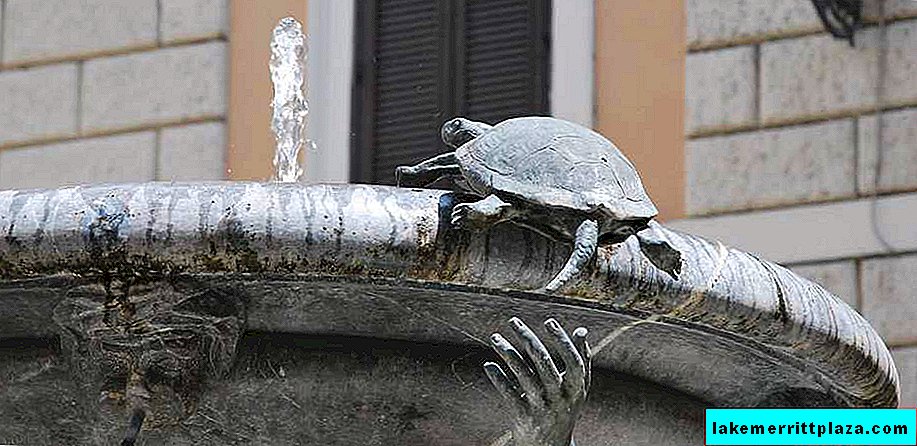
However, the ministers of the Vatican did not leave their attention to the fountain. In 1658, on the orders of Pope Alexander VII, who contributed to the creation of many architectural structures, four turtles were added, their decorative solution is attributed to Lorenzo Bernini (Giovanni Lorenzo Bernini, 1598 - 1680) or Andrea Sacchi (Andrea Sacchi, 1599 - 1661). In memory of this restoration, which not only changed the appearance and name of the fountain, but also solved the problem of insufficient water pressure, you can see a scroll at the base between the sinks, which says - ALEXANDER VII.
History and Artistic Solution
The fountain acquired its modern name only after reconstruction by Pope Alexander VII. Initially, there were no turtles, in their place were dolphins, the same as today can be seen below.
The fountain was typical for that time: a pedestal, a ball on it, a square pool around it, four huge shells in it. Water from the center flows into the sinks, as well as into the main pool. A distinctive feature is the decor. For the first time, the fountain was decorated so exquisitely. Mucius Mattei also insisted on this, hiring an unknown master for his artworks - Taddeo Landini (Taddeo Landini, 1550-1596). The figures of four young men and eight dolphins were made of bronze. It was also an innovation. Typically, fountain decorations were made from cheaper marble. The combination of bronze figures with a marble base also carries an artistic burden.
The decorative solution is impressive: the dynamic, completely nude figures of young men riding saddle dolphins support the giant bowl. Expression, pressure, grace.
A little later, four dolphins were transferred to the Terrina Fountain (Fontana della Terrina), then to the church of Santa Maria in Valicella (Chiesa Nuova), since the spontaneously incoming water was not enough for the full work of all the figures. After that, the composition began to seem unfinished, the young men held out their hands in the void. During the reconstruction of 1658-1659, the places were filled with turtles.
Naturalistic sculptures of turtles by Lorenzo Bernini (Giovanni Lorenzo Bernini, 1598 - 1680) attracted the attention of art lovers. Bronze reptiles were repeatedly abducted, in 1944 all 4 turtles were stolen. They were later found and returned to their place. After another theft of one of the turtles in 1979, the three remaining originals were deposited at the Capitoline Museums (Musei Capitolini). The fountain presents exact replicas.
Architect and sculptor
The fountain project was designed by Giacomo della Porta (Giacomo della Porta, 1532 - 1602) - Roman architect and sculptor. He worked in the mannerism style. Mannerism is characterized by: eroticism, spirituality, inflatedness, deformation of lines, tension, unusualness.
Titian, Tintoretto, Rafael Santi, Michelangelo have elements of style. The author of the fountain of turtles in the 17th century was often mistakenly considered the last two.
Other famous works by Giacomo della Porta concentrated in Rome:
- The main dome of St. Peter's Basilica (Basilica di San Pietro);
- Church of Il Gesu (La chiesa del Santissimo Nome di Gesù);
- University of Sapienza (Sapienza Università di Roma);
- Villa Aldobrandini
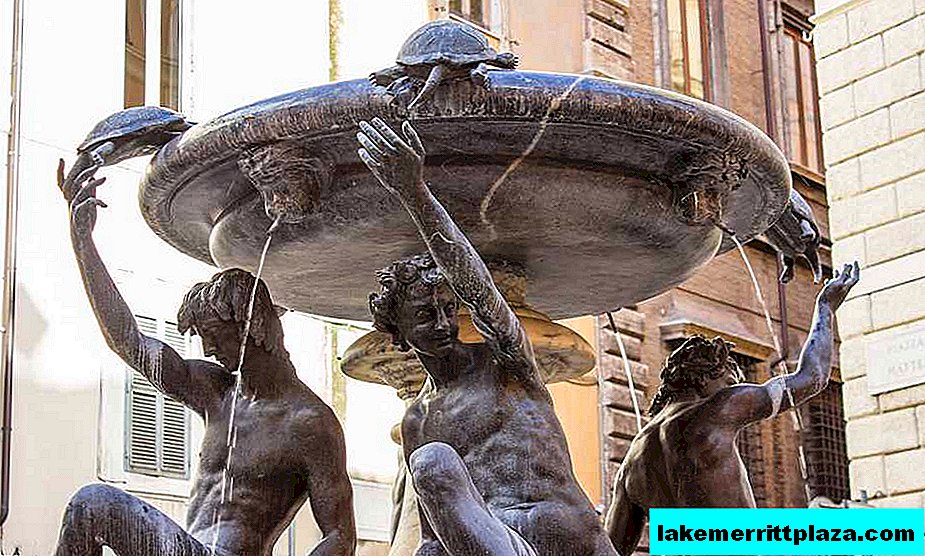
Sculptures of young men and dolphins were performed by a young Florentine sculptor Taddeo Landini. This was his first and most significant work, thanks to which he became famous.
Lorenzo Bernini took part in the creation of turtles only presumably, but there is good reason for this version, since it was he who was actively patronized by Pope Alexander VII.
Legend
The source of the legend is unknown and echoes the plots of numerous fairy tales, where the main character, usually a dumb guy or a guy from the people, wins the hands of a beautiful woman, performing miracles, such as building a bridge in one night. There are a lot of legends, the essence is as follows:
One of the Dukes of Matthew was a passionate player. Having lost his estate and left without a livelihood, he fell in the eyes of a wealthy landowner, and he forbade his daughter to marry a man, although noble, but "with the wind in his head." To rehabilitate himself and prove that he was able to create as quickly as he could lose, the Duke invited an intractable squire to his house in the evening. A night passes full of entertainment, and in the morning the duke leads the guest to the window: there is a miracle that he built in just one night, because in the evening there was no fountain. A startled father gives his daughter his hand. Later, the duke orders the walled window.
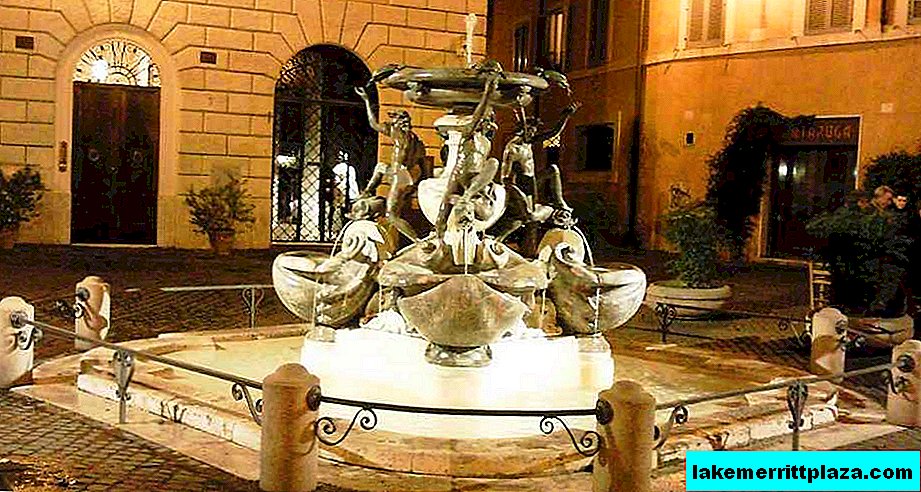
In fact, the Mattei Palace was built later than the fountain - in 1616. However, there are reasons for the birth of a legend:
- The Mattei family took a serious part in the fate of the fountain, patronizing it for several centuries;
- The fountain really looks very beautiful from the windows of the palace, as anyone can see today, the entrance to the palace is free, and the windows, if they were once walled up, have long been opened.
Symbolism
It is believed that dolphins, accompanied by turtles, are a symbol of the slogan "Hurry up slowly" (Greek Speude bradeôs), a favorite expression of the Roman emperor Octavian Augustus.
They also trace the connection with the myth of Jupiter and Ganymede. The following facts speak in favor of this version:
- The fountain sponsored the duke, whose name was Giove (it. - Jupiter);
- Turtles were added after 70 years and are not related to the original idea;
- Characteristic dynamic postures of young men, with a hand raised up, and a bent opposite knee, naked bodies, their youth, a minimum of attributes. All this has traditionally been used previously to depict Ganymede carried away by an eagle.
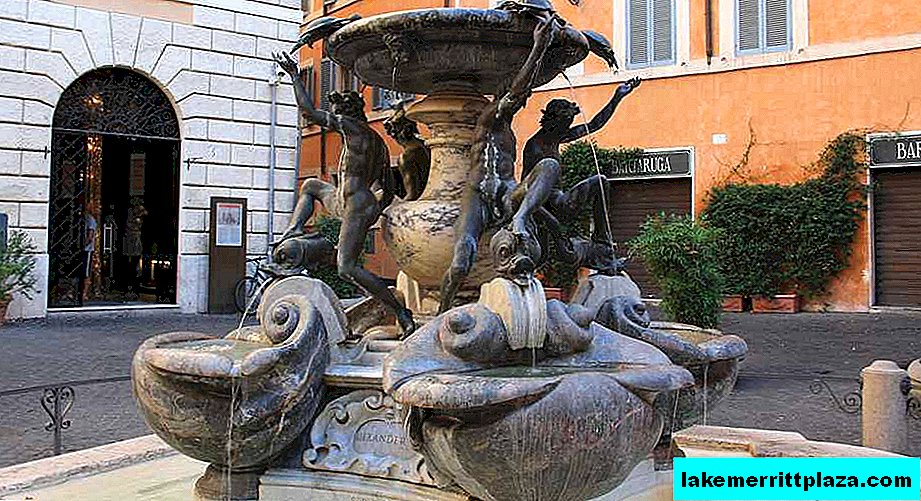
Summary of the myth: the myth is a Roman version of one of the love affairs of Zeus (Jupiter). Jupiter, seeing the handsome Ganymede grazing sheep, immediately fell in love with him, and turned into an eagle to go down to earth. The eagle-Jupiter kidnapped the young man, and made him his lover. Subsequently, Ganymede became a demigod.
There is some documentary evidence that the Mattei family, who patronized art, was well acquainted with the incarnations of Ganymede (for example, Ganymede by Baldassarre Peruzzi, Villa Farnesina, 1541).
Why turtles
It is surprising why the turtles were chosen instead of the mythical dolphins who left the fountain? Turtles were not a widely used iconographic element. The alleged author of the turtles Lorenzo Bernini revolved among scientists who knew about the syncretic (undivided) connection between the turtle and the myth of Jupiter and Ganymede. Hence, the choice of these creatures can be logical.
Fountain in art
The fountain quickly gained popularity and attracted the attention of artists.
- He was portrayed in detail by Giovanni Battista Falda (1640-1678), an Italian engraver depicting the architecture and layout of Rome in the 17th century;
- Brodsky mentions him in the poem "Piazza Mattei": "I drank from this fountain in the gorge of Rome ...";
- In the final scene of the Italian gangster series Romanzo criminale (2008-2010), the hero del Freddo was killed on Mattei Square and thrown into the fountain of turtles.
How to get there
Finding a fountain of turtles is very simple, as it is located in the very center of Rome. Attractions nearby:
- Theater marcellus
- Tiberina Island
- Piazza Torre Argentina (Largo di Torre Argentina) - where cats live in Rome.
At Piazza Mattei, we visit during our walks at dawn, and here also begins our sightseeing tours of Rome.



